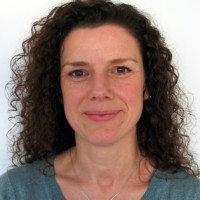The future of audiology – improving diagnosis for children with hearing loss
This year as we celebrate the 100 year anniversary of Deaf Education and Audiology at The University of Manchester we’re bringing you a series of thought provoking blogs by our Manchester BRC Hearing Health researchers.
In her blog Helen Whiston, Research Audiologist highlights how NIHR Manchester BRC and NIHR Manchester Clinical Research Facility (CRF) are supporting the design of a new, quick, easy and robust speech-in-noise test for children which she hopes can develop into a successful new test for the UK’s NHS Audiology clinics.
Do you know around 50,000 children in the UK have hearing loss?
Approximately half of these 50,000 children will have hearing loss from birth. The other half will develop difficulties with their hearing during childhood. Not getting the diagnosis and subsequent help that these children need could impact on their learning of language, social interaction and education.
Communication is essential to us as human beings; we are social animals and need interaction with others in order for us to experience good mental health and wellbeing.
Speech-in-noise tests
The most common report of people with listening difficulties is hearing speech in noisy environments. The gold standard for measuring hearing since audiology began has been the pure tone audiogram. However, the audiogram measures detection of tones in quiet. Although the audiogram is still a useful index for hearing sensitivity across the frequency range, it doesn’t fully explain the consequences of having an impaired hearing sensory system, specifically reduced speech understanding in noise.
Everyday life is noisy, we are more often than not trying to listen to each other whilst there is competing background noise whether it be others talking, TV, music or Xboxes! This for children can be more challenging, as they are developing their language, listening and social skills, particularly in pre-school and school settings. Knowing how well a child can hear in this real-life situation by using speech-in-noise listening tasks may help inform us more accurately of the level of difficulty they are experiencing and if they need additional help in a more measured, standardised way.
Improving the diagnosis and care for children with hearing loss has always been important to me, from working as an NHS audiologist for 16 years to being the research audiologist I am today. Over this time I’ve seen notable advances in audiology such as the “modernising hearing aid services” programmes which brought digital hearing aids to the NHS, and been directly involved in implementing the newborn Hearing Screening Programme (NHSP) at the NHS trust where I worked as the clinical lead.
FreeHear
Thanks to funding by the NIHR and use of our specialised facilities at Manchester CRF at Royal Manchester Children’s Hospital we have begun the process of designing a new, quick, easy and robust speech in noise test for children (FreeHear) which we hope given time and research we can develop into a successful new test for the UK’s NHS Audiology clinics.
We have seen over 100 children aged between four to 12 years old who have voluntarily taken part in our FreeHear test to help us improve and fine tune the design of the test and collect results to provide normative values for age which can be used and measured against in the clinic.
The results have been really encouraging and have taken us a step closer to producing a practical test design.
We are interested now in testing a more clinic friendly version of the test with children who have hearing impairment and use hearing aids, and running the tests with children who have English as a second language.
These advances are just the beginning of a whole new era for hearing assessment.
Helen Whiston
Manchester BRC Hearing Health will be hosting a showcase in Manchester in October to share the work of the Hearing Health theme.
